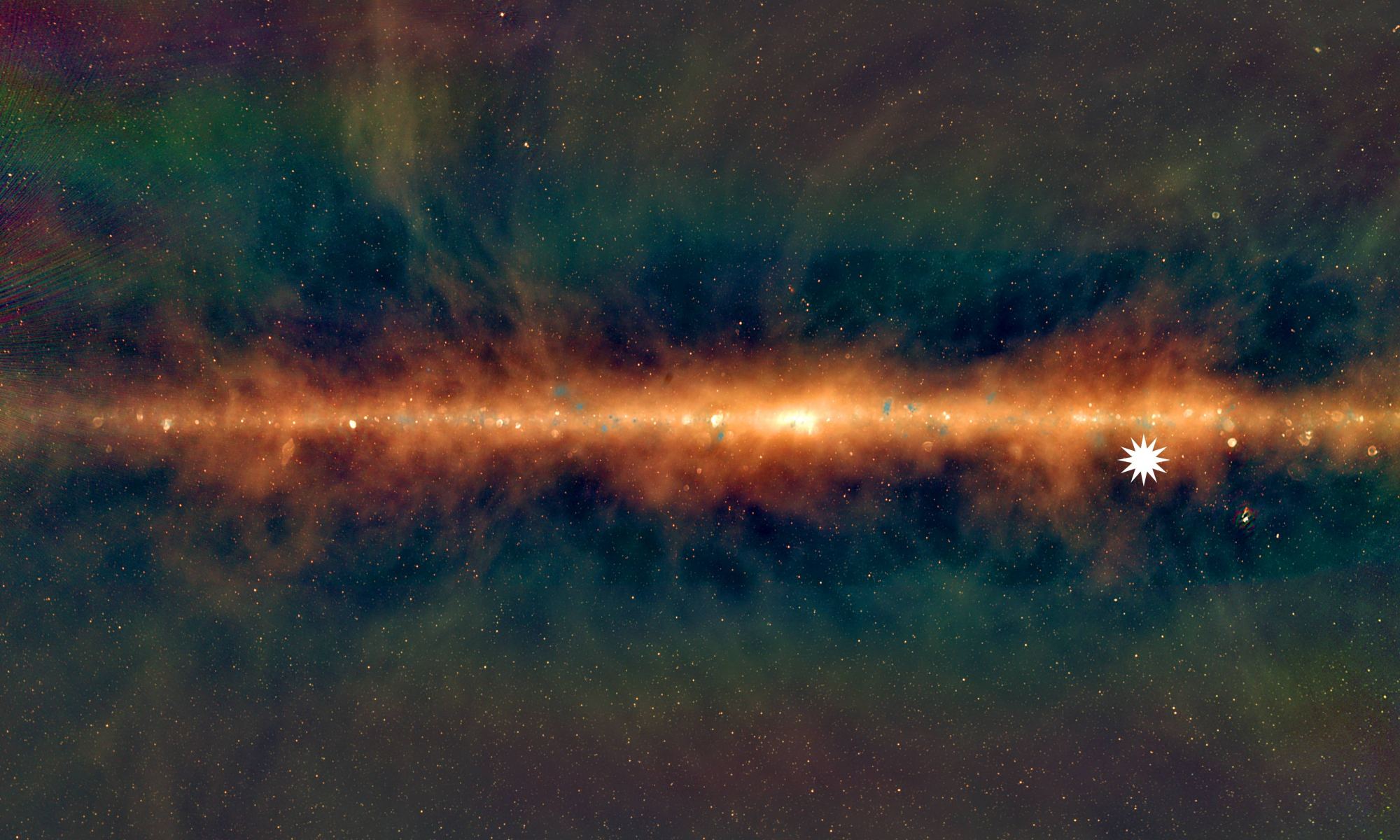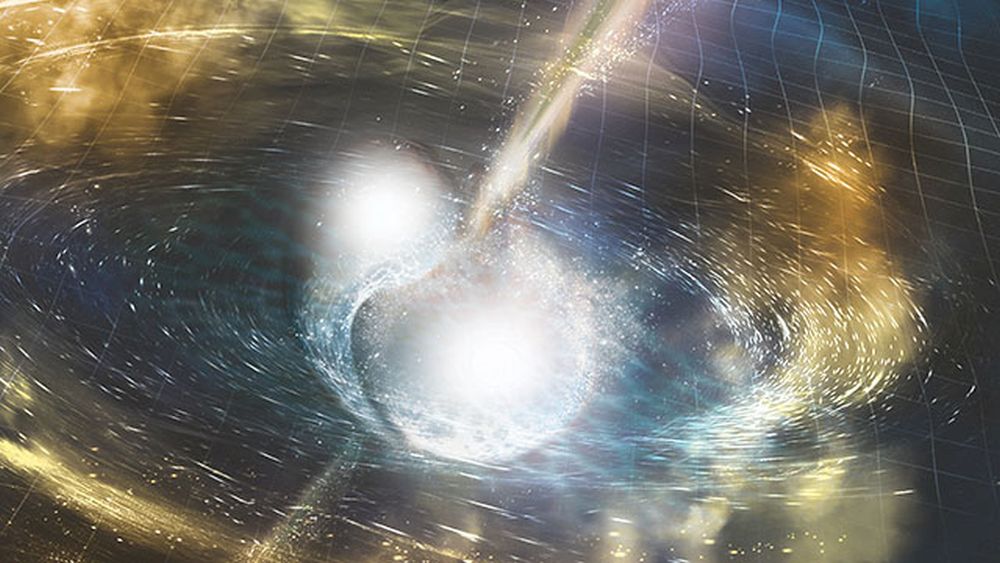This week the official count of known exoplanets crossed 5,000. On the one hand, there isn’t anything special about 5,000 vs 4,900 or 5,100, but on the other hand, crossing this threshold is an indication of how far we’ve come, and how quickly things will change in the future.
Continue reading “It's Confirmed. We now Know of More Than 5,000 Exoplanets”Astronomers Could Detect Gravitational Waves by Tracking the Moon's Orbit Around the Earth

Gravitational waves are notoriously difficult to detect. Although modern optical astronomy has been around for centuries, gravitational wave astronomy has only been around since 2015. Even now our ability to detect gravitational waves is limited. Observatories such as LIGO and Virgo can only detect powerful events such as the mergers of stellar black holes or neutron stars. And they can only detect waves with a narrow range of frequencies from tens of Hertz to a few hundred Hertz. Many gravitational waves are produced at much lower frequencies, but right now we can’t observe them. Imagine raising a telescope to the night sky and only being able to see light that is a few shades of purple.
Continue reading “Astronomers Could Detect Gravitational Waves by Tracking the Moon's Orbit Around the Earth”There are Deposits of ice at Mercury's Poles too
Although the Arecibo radio telescope is no more, it continues to deliver scientific discoveries. There is a wealth of Arecibo data astronomers continue to mine for new discoveries, and one of them is thanks to an astronomical technique known as planetary radar.
Continue reading “There are Deposits of ice at Mercury's Poles too”A new way to Confirm Hawking's Idea That Black Holes Give off Radiation

Nothing can escape a black hole. General relativity is very clear on this point. Cross a black hole’s event horizon, and you are forever lost to the universe. Except that’s not entirely true. It’s true according to Einstein’s theory, but general relativity is a classical model. It doesn’t take into account the quantum aspects of nature. For that, you’d need a quantum theory of gravity, which we don’t have. But we do have some ideas about some of the effects of quantum gravity, and one of the most interesting is Hawking radiation.
Continue reading “A new way to Confirm Hawking's Idea That Black Holes Give off Radiation”If Axions are Dark Matter, we've got new Hints About Where to Look for Them
If dark matter is out there, and it certainly seems to be, then what could it possibly be? That is perhaps the biggest mystery of dark matter. The only known particles that match the requirement of having mass and not interacting strongly with light are neutrinos. But neutrinos have low mass and zip through the cosmos at nearly the speed of light. They are a form of “hot” dark matter, so they don’t match the observed data that require dark matter to be “cold.” With neutrinos ruled out, cosmologists look toward various hypothetical particles we haven’t discovered, and perhaps the most popular of these are known as axions.
Continue reading “If Axions are Dark Matter, we've got new Hints About Where to Look for Them”Neutron Stars Could be the Best way to Measure Dark Energy
Dark energy is central to our modern theory of cosmology. We know the universe is expanding at an ever-increasing rate, and the clearest explanation is that some kind of energy is driving it. Since this energy doesn’t emit light, we call it dark energy. But simply giving dark energy a name doesn’t mean we fully understand it. We can see what dark energy does, but its fundamental nature is perhaps the biggest scientific mystery we have.
Continue reading “Neutron Stars Could be the Best way to Measure Dark Energy”Astronomers see Dead Planets Crashing Into Dead Stars

When our Sun dies, the Earth will die with it. As a star of middling mass, the Sun will end its life by swelling into a red giant star. After a last cosmic moment of brilliance, the remnant core of the Sun will collapse into a white dwarf. This won’t occur for billions of years, but the mass and composition of the Sun means a white dwarf is its inevitable fate.
Continue reading “Astronomers see Dead Planets Crashing Into Dead Stars”Why are Neptune and Uranus Different Colors?
Uranus and Neptune are similar planets in many ways. Both are ice giant worlds, both have atmospheres rich in methane, and both have a bluish color. But while Uranus has a pale blue-green hue, Neptune has a deep blue color. But why? Why would two planets so similar in size and composition appear so different? According to a recent study, the answer lies in their aerosols.
Continue reading “Why are Neptune and Uranus Different Colors?”Binary Black Holes can Unlock Another of Einstein’s Predictions
In the grand scheme of things, the structure of a black hole is pretty simple. All you need to know is its mass, electric charge, and rotation, and you know what the structure of space and time around the black hole must be. But if you have two black holes orbiting each other, then things get really complicated. Unlike a single black hole, for which there is an exact solution to Einstein’s equations, there is no exact solution for two black holes. It’s similar to the three-body problem in Newtonian gravity. But that doesn’t mean astronomers can’t figure things out, as a couple of recent studies show.
Continue reading “Binary Black Holes can Unlock Another of Einstein’s Predictions”Astronomers Discover a Mysterious Star That Flashes Every 20 Minutes. But What is it?

Just 4,000 light-years from Earth is a strange, star-sized object. It’s been observed by radio telescopes, but astronomers aren’t sure what it is. They call it a long period transient.
Continue reading “Astronomers Discover a Mysterious Star That Flashes Every 20 Minutes. But What is it?”





